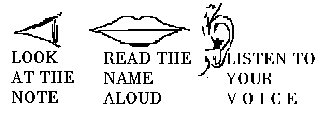If you know to play the full score on a key board, and you have the talent to compose, read music scores, and have a good ear for music, you can indeed form a Choir of your own.
Whether a Choir or a Music Group, needs leadership skills. You should know to persuade people, and motivate them.
People get fed up, when the Choir Masters are aggressive, pretend they know much, when their actions show otherwise. So, first learn to master the art of music yourself, read books and articles on the internet, and familiarize yourself with the art.
If you think, you will teach your singers to sing by heart, your Choir will be able to sing once or twice a year for major feasts. But what is the use? If you can teach your singers to sing from score, they do not have to have lengthy practices, and thus will not be heavily burdened with leaving their other chores and coming for your practices.
Since I did this experiment myself, I can tell you with assurance, that it is possible. Of course you will have to sing all the parts of the score, freely, and without hesitation, thus your singers know that you have full control over the subject. The first 30 or so practices should be to learn how to read music, and you can use the material in the Vocal Music text book on my website. You can make your own exercises if you want, and can use the Finale Software to write these.
Remember, the singers will sing the notes by heart, or by ear. To know that they really read the music, you should ask them to read the note names, and count the timing in the Read-Count-Sing Method.
 |
Translation helps in crystallizing your knowledge of the notes and their duration and is a good way to speed up your understanding of the musical notation. Do not underestimate its use. Translate as many exercises as you can, then read-count the table aloud, so that you hear your own voice, and get used to its counting. Remember, singers should use the Do Re Mi name set, and Organ players the C D E name set.
THE THIRD STEP -read count and play:
Read Count
& Play
The third step in the study of music consists of READING LOUDLY the name and the subsequent counts and playing the instrument at the same time, or singing the note.
The aim is to create an association in the mind between the sound name, the duration and the related key or the sound sensation in case of singers.
For TRANSLATION of the following exercises, see Appendix B, at the end of the book.
If you follow this procedure, you will be able to absorb the knowledge as nature intended. Remember, even the doctor prescribes medicines in small doses at repeated intervals, as that is the only way our bodies can absorb external elements. The same applies to knowledge. Knowledge acquired in small doses at repeated intervals, and as individual elements in a complex study, yields better results.
You can use the various hymns and masses as your material. Download the scores, and print them. If you want, re-enter the music on your software, for each individual part. If you use Printmusic software, all this is possible and this will be a useful software in your hands.
If you need any practice material, please write to me.
My email address is : This e-mail address is being protected from spambots. You need JavaScript enabled to view it
To download Finale Software go to: http://www.finalemusic.com
| < Prev | Next > |
|---|
